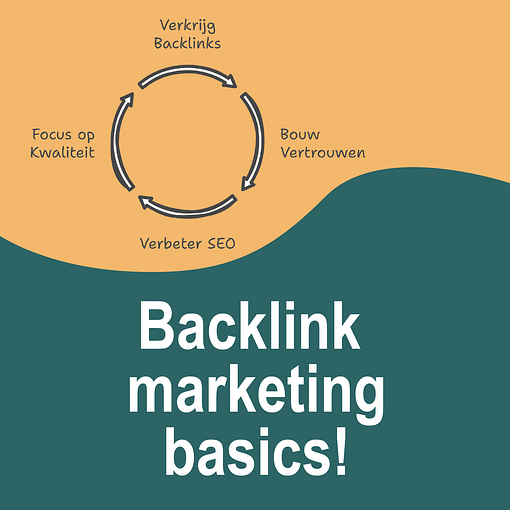For optimal interactions with AI
In recent years, the popularity of AI-powered chatbots like ChatGPT has skyrocketed. These AI models, developed by OpenAI, have become powerful tools for a wide range of applications: from composing text and writing code to brainstorming and answering questions. However, to get the most out of ChatGPT, it's essential to understand how to write good prompts. A prompt is the starting point that determines how the AI responds and whether you achieve the desired result. In this article, we'll discuss what ChatGPT is, how it works, what you can expect from the model, and some key tips for writing an effective prompt.
What is ChatGPT?
ChatGPT is an AI language model developed by OpenAI, trained to understand and respond to human language. The model was developed using millions of text fragments and is continuously updated to better respond to all kinds of requests and questions. ChatGPT can be helpful in a variety of situations, from educational assistance and creative writing to customer service.
What makes ChatGPT so special is its ability to mimic human interactions. This means it's capable of providing natural and contextually appropriate responses.
How does ChatGPT work?
ChatGPT uses deep learning and is specifically trained for natural language processing. The model is based on GPT, which stands for "Generative Pre-trained Transformer." Simply put, the model learns to recognize patterns in language by analyzing millions of pieces of text. When you enter a prompt, ChatGPT analyzes the content and tries to understand what you want. It then generates a response based on what it has learned and what it believes is the correct answer to your question or request.
While ChatGPT is impressive, you should consider it an assistant, not a human expert. The model occasionally makes mistakes or may provide answers that aren't entirely accurate, depending on the question. Therefore, it's important to use good prompts that guide the model to the correct answers and to verify what it has written.
What can you expect from ChatGPT?
ChatGPT is very versatile, but it also has limitations. Here are some tasks it excels at, and a few it's less well-suited for.
ChatGPT is great for:
- Educational assistance: Explain topics such as history, physics or mathematics.
- Brainstorming: Generate ideas for projects, campaigns, or products.
- Technical support: Answer basic questions about code, software, or specific procedures.
ChatGPT is less suitable for:
- Accurate medical or legal advice: The model is not a substitute for professional experts.
- Complex decisions: ChatGPT can provide suggestions, but is not intended for high-risk decisions.
- Sensitive information: ChatGPT cannot process personal or confidential information, and it is not advisable to share such data.
In short, ChatGPT is a useful assistant for everyday tasks, but it is not a replacement for subject matter experts and is not suitable for privacy-sensitive applications.
Why are good prompts so important?
A good prompt ensures you get a valuable and relevant answer. ChatGPT can handle vague prompts, but to truly get a specific and useful response, it's important to use clear and precise prompts. A vague prompt like "Tell me about marketing" will yield a less specific answer than "Explain what content marketing is and give five practical tips for a small business."
Tips for writing a good ChatGPT prompt
Here are some helpful tips and techniques for writing an effective prompt:
1. Be specific
One of the most important things to remember when writing a prompt is to be as specific as possible. This helps the model better understand what you're looking for and gives you a more targeted answer. For example, suppose you want to know about SEO. Instead of asking "What is SEO?", you could ask "What are the most important SEO techniques for improving a website in 2024?" This gives ChatGPT context and makes the answer more relevant.
2. Use context
Provide context for the AI when possible. For example, if you want ChatGPT to write in a particular style or tone, specify this in your prompt. A prompt like "Write a short story about friendship in the style of a children's book" will result in a story suitable for young readers, while "Write a detailed story about friendship for adults" will strike a different tone.
3. Ask questions in steps
For complex questions, it can be helpful to work in stages. For example, suppose you want an explanation of blockchain technology and its applications. Start with "Explain what blockchain technology is," and then follow with "What applications does blockchain technology have in healthcare?" This gives the AI the opportunity to thoroughly answer each part of your question.
4. Add instructions
When you ask ChatGPT to generate text, also provide instructions regarding the length, style, or tone of the response. A prompt like "Provide a 100-word summary of the European Union's climate change policy" is specific and leaves no room for interpretation regarding length.
5. Avoid ambiguity
Vague prompts can lead to inconsistent answers. Therefore, avoid ambiguities by using words and phrases that aren't open to multiple interpretations. Instead of a prompt like "Write something about trends," you could be more specific with "Describe the top interior design trends for 2024."
6. Try variations and iterations
It can be helpful to test different variations of your prompt to see which one yields the best results. If you're not satisfied with the first answer, try rewriting the prompt or adding more context.
7. Please specify the target audience
If you want an answer that's suitable for a specific audience, mention this in the prompt. For example, ask, "Explain artificial intelligence to high school students" instead of just "Explain artificial intelligence." This ensures the answer is understandable and relevant to the intended audience.
Common mistakes when writing prompts
Here are some common mistakes people make when writing prompts and how to avoid them:
- Too short or vague: If you don't provide enough details, ChatGPT will have a harder time responding to your question. Make sure you include sufficient context and details in your prompt.
- Having unrealistic expectations: While ChatGPT has impressive capabilities, it's not human. Don't expect complex opinions or in-depth analyses like those of an expert.
- Do not perform check: ChatGPT can sometimes provide incorrect information. Therefore, it's wise to check your answers if you're using ChatGPT for research or educational purposes.
A good ChatGPT prompt is clear, specific, and provides sufficient context. The model can only function optimally if it is properly instructed. By investing in writing a good prompt, you not only save time but also increase the chance of a satisfying and useful answer.
Ready to get the most out of ChatGPT? Start improving your prompts and discover the many possibilities AI can offer.
Become a pro at writing prompts and discover the power of ChatGPT – make a difference in your SEO results!




